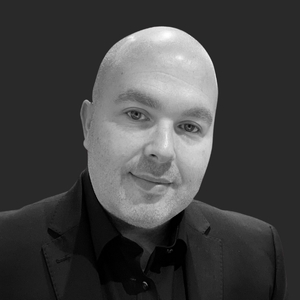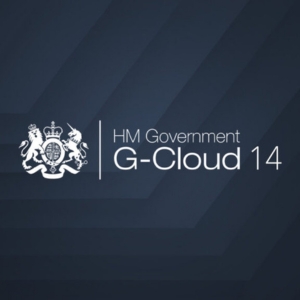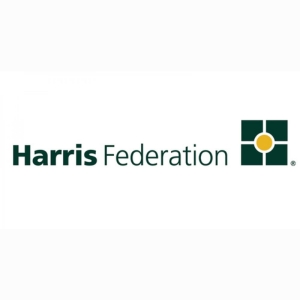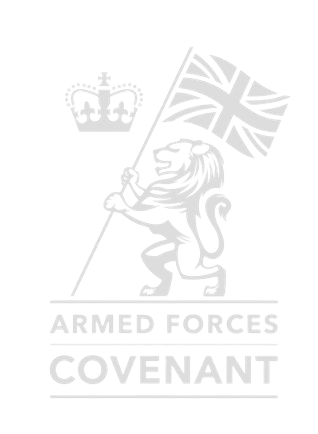Malikshaw Interim
Thinking of Going Interim?
Interim work gets talked about a lot these days. Scroll LinkedIn for five minutes and you’ll see posts celebrating the freedom, flexibility, and day rates. And to be fair, some of that is true. But what doesn’t get shared quite so openly is the reality of building a career as an interim, especially at senior level and in complex public and private sector environments.
Going interim isn’t just a change of contract. It is a change of mindset. And it suits some people far better than others. If you are thinking about making the move, here is what people don’t always tell you upfront.
Despite what it might look like online, very few successful interims sat down one day and decided, “I am going to be an interim now.” More often, it starts with a moment such as a restructure, a change in leadership, a project that needed doing quickly, or frustration with slow decision-making. An interim role appears at the right time, it plays to someone’s strengths, and it goes well. One turns into two. Two turns into a portfolio. What matters is not how you arrive at interim work, it is whether you understand what you are signing up for next.
One of the biggest surprises for people coming out of permanent roles is the gaps between assignments. There will be gaps. Sometimes short, occasionally longer than you would like. That does not mean you are doing something wrong. It is just part of the model. Good interims plan for this financially and mentally. They do not see themselves as out of work between roles. They see it as downtime, reset time, or space to be selective about what comes next. Where it gets uncomfortable is when people expect interim life to feel like permanent employment with better pay. It does not. If certainty and continuity matter more to you than variety and autonomy, interim work can feel surprisingly stressful.
There is also a myth that interim roles are somehow simpler, with shorter contracts, clearer objectives, and fewer politics. In reality, interims are often brought in because something is not working. You might be picking up a stalled programme, stepping into a leadership gap, managing through conflict or change, or delivering something under intense scrutiny. You do not get much grace period. You are expected to land, listen, diagnose, and act quickly. For many people, that is exactly the appeal, but it does mean interim work can feel more exposed than a permanent role, not less.
Another shift that is not always obvious is that being good in role is only half the job. Interims also have to manage their own careers much more actively. That includes thinking in terms of a pipeline rather than a single role, being clear about the types of assignments they will accept, and protecting their reputation carefully. Delivery matters, but so does how you leave an organisation, how you hand over, and how you are talked about afterwards. Experienced interims understand that each role sets up the next one.
And not all strong leaders make good interims. Some excellent permanent leaders struggle in these roles, while others thrive. The difference usually comes down to a few traits: comfort with ambiguity, low ego combined with high confidence, strong listening and diagnostic skills, and political awareness without becoming political. Interims often have to influence without formal authority. If you need time to build trust slowly or prefer stable structures, interim work may feel like hard work. That is not a judgement. It is about fit.
Public and private sector interim roles are also different beasts. In the public sector, interims often deal with complex governance, multiple stakeholders, and public scrutiny. In the private sector, the pressure is more likely to come from pace and commercial urgency, investor or board expectations, and tighter margins for error. Neither is easier. They are just difficult in different ways. Moving between sectors can be hugely rewarding, but only if you understand the context you are stepping into.
Your recruiter matters more than you might think. In interim work, a poorly briefed role is not just an inconvenience. It can damage your reputation. When expectations are not clear, when the scope keeps shifting, or when stakeholders are not aligned, it is usually the interim who feels it first. A good recruiter pushes back on vague briefs, is honest about the realities of the role, and matches people to environments they can genuinely succeed in. A transactional approach might fill a role quickly, but it rarely leads to long-term success.
Before making the move, it is worth being honest with yourself. Are you comfortable with uncertainty? Can you walk into difficult situations and make decisions quickly? Do you have the financial runway to manage gaps? Do you want variety right now, or stability? Interim work can be hugely rewarding, but it works best when expectations are clear on all sides.
Interim careers are not built on hype. They are built on realism, trust, and delivery. For the right people, at the right stage, interim work offers variety, challenge, and genuine impact. For others, a permanent role may still be the better fit. That is fine. What matters is understanding the reality before you make the leap.
If you are thinking about going interim, or just want to talk through whether it is right for you, we would be happy to have an honest conversation. No pressure, no sales pitch. Just a chance to walk through the realities and help you decide what comes next. Contact us
LAURA GOODMAKER
My Biography
Passionate about guiding people into roles they love and partnering with companies to create high‑performing, future‑ready teams.
My Areas of Expertise
TBC
My Languages
English
My Interests
TBC
MITCH WAYNE
My Biography
I am a Recruitment Specialist with over 20 years’ experience in 360° recruitment and executive search across the UK and international markets. I have successfully built and led my own consultancy, partnering with start-ups, scale-ups, and global organisations to deliver strategic hiring solutions
My Areas of Expertise
360° Recruitment, Business Development, Technology
My Languages
English
My Interests
- Family
- Sport
- Socialising with friends
The Christmas Truce of 1914
On Christmas Eve 1914, along parts of the Western Front, something unexpected happened.
The guns fell silent.
For months, young men had been living in freezing trenches, separated from the enemy by little more than mud, wire and fear. Orders were clear. The system was clear. The mission was clear. Hold the line. And yet, as darkness fell, soldiers on both sides began to hear singing. Christmas carols drifted across No Man's Land. Candles appeared. Small trees were raised above the parapets. A few brave individuals climbed out of the trenches, unarmed.
By Christmas Day, soldiers were meeting between the lines. They exchanged food, shared cigarettes, buried the dead, and in some places even played football. For a brief moment, the machinery of war stopped, not because it was instructed to, but because people chose something different.
It is often described as a miracle. It was not. It was humanity asserting itself when systems failed to recognise it.
No general planned it. No command authorised it. There was no programme, no governance structure, no change office. It emerged organically, driven by shared values, mutual recognition, and a simple, powerful truth: the people on the other side were not so different.
And that is what makes it so interesting.
In organisational terms, the Christmas Truce was a transformation that did not come from leadership hierarchy, policy, or enforcement. It came from belief. From identity. From people acting in line with deeply held values when the system around them allowed no space for those values to surface.
Of course, the truce did not last. Orders were reissued. Authority reasserted itself. The war resumed.
But the moment matters.
Because it reveals something fundamental about change.
We often assume that transformation fails because of poor plans, insufficient funding, or inadequate technology. Sometimes that is true. More often, it fails because the change is imposed on people rather than emerging with them. Because it asks people to behave differently without acknowledging what they believe, fear, or care about.
The Christmas Truce reminds us that people do not resist change because they are stubborn or irrational. They resist it when it conflicts with their identity, when it feels imposed, or when it ignores what matters to them. Equally, it shows what becomes possible when those same people feel seen, respected, and aligned around a shared sense of purpose.
In modern organisations, we talk a great deal about culture, engagement, and leadership. We design transformation programmes with milestones, dashboards, and delivery plans. All of these have their place. But culture does not change because a programme says it should. It changes when people believe the change makes sense, aligns with their values, and improves their world in some meaningful way. That is why the most enduring transformations are not the loudest or the fastest. They are the ones where leaders understand that their role is not just to direct, but to create the conditions in which people choose to move together.
The Christmas Truce lasted only days. Its impact has lasted more than a century.
As we pause at the end of the year, it is a useful reminder that even in the most complex, pressured environments, transformation is ultimately a human endeavour. Systems matter. Plans matter. Technology matters.
But people matter more.
And when people are trusted, understood, and placed in the right roles, extraordinary things can happen — sometimes even without being asked.
Looking Back, Moving Forward
2025 was a year full of change and bold moves. Technology kept evolving, work and leadership looked different almost overnight, and everyone seemed to be trying out new ways of doing things. AI started showing up in everyday workflows, hybrid work became the norm, and people experimented with fresh ideas for growth, culture, and transformation. It was a year that challenged how we focus, make decisions, and actually get things done. This short quiz is a fun way to see how much of those lessons stuck with you as we move through 2026.
Question 1: When it comes to big projects, what’s the real value of an interim step?
A. It’s just paperwork or a placeholder
B. It gives a chance to test, learn, and adjust
C. It slows things down unnecessarily
D. It’s only for formal reporting
✅ Answer: B
Interims aren’t just in-between stops, they are a chance to test ideas, gather feedback, and make smarter decisions before fully committing.
Question 2: What created the biggest challenges to focus last year?
A. People weren’t motivated enough
B. Too many things were competing for attention
C. Work was too simple
D. Creativity disappeared
✅ Answer: B
The real challenge wasn’t effort or talent, it was all the distractions and constant information coming at us. Protecting your attention became more important than ever.
Question 3: When people chase trends in work, lifestyle, or creative projects, what’s the real risk?
A. It’s time-consuming
B. It often lacks lasting impact or purpose
C. It’s hard to find trending topics
D. It doesn’t look impressive
✅ Answer: B
Trends in social media, lifestyle, or creative work can get attention, but without intention or alignment with your values, they rarely create anything that lasts.
Question 4: What defines a true transformation, as opposed to a regular project?
A. Making small, incremental changes over time
B. Applying a few cosmetic updates
C. A wholesale, root-and-branch change that shifts systems, processes, and mindset
D. Completing a task faster than usual
✅ Answer: C
A transformation goes beyond a normal project. It reshapes structures, processes, and sometimes even culture, creating a fundamental shift rather than just improving things bit by bit.
Final Question: If these insights sound familiar, where were they explored in more depth?
A. Random threads online
B. Personal trial and error
C. Trend reports
D. Malikshaw blogs
✅ Answer: D
Whether it's taking on a transformational project, leading a high-performing team, or stepping into an interim role, now is the time to put these insights into action. If you're ready to make your next move count, check out our latest interim opportunities and find the role that's right for you.
The Future of Work: Careers for 2030
Imagine stepping into a time machine and fast-forwarding a few years; the world of work you'd encounter would look strikingly different. Rapid technological breakthroughs, shifting demographics, and evolving global priorities are not just changing how we work; they are redefining which roles will matter most in the decade ahead. For anyone charting a career path or building future-ready teams, understanding these changes is no longer optional; it is essential.
Here's our take on the careers likely to see strong growth by 2030:
1. Technology and Data Experts
As digital transformation continues, the demand for tech-savvy professionals will rise. AI developers, cybersecurity specialists, data analysts, and cloud engineers are already in high demand—and by 2030, this need will only intensify. Organizations will seek individuals who can manage advanced systems while safeguarding data and ensuring responsible, ethical use.
2. Healthcare and Wellbeing Professionals
An aging population and growing focus on health and wellness mean the healthcare sector will keep expanding. In addition to doctors and nurses, mental health counsellors, telehealth providers, senior care experts, and public health consultants will be increasingly vital. The recent global health crises have reinforced the importance of these roles, a trend set to continue.
3. Green and Sustainability Roles
Climate change is driving a shift toward sustainable business practices. Careers in renewable energy, environmental consulting, sustainable engineering, and green construction will be crucial as organizations work toward net-zero goals. Professionals who can guide companies in reducing environmental impact will be highly sought after.
4. People-Focused Careers
While automation may take over repetitive tasks, roles that require creativity, emotional intelligence, and interpersonal skills will flourish. HR leaders, learning and development managers, diversity and inclusion specialists, and executive coaches will play key roles in fostering resilient, adaptive workforces.
5. Educators and Skills Trainers
Rapid technological change means continuous learning will be essential. Trainers, teachers, and digital learning professionals will help workers develop new skills, pivot careers, and remain competitive. Lifelong learning won't just be encouraged—it will be necessary.
6. Creative and Digital Media Professionals
The creator economy continues to expand, and businesses will increasingly rely on digital storytellers. Skilled content creators, UX/UI designers, digital marketers, and immersive media developers will be in high demand. Creativity, audience engagement, and innovative thinking will distinguish successful professionals.
Looking Ahead: A common thread across all future careers is adaptability. Professionals who blend technical expertise with creativity, critical thinking, and emotional intelligence will continue to stand out. For individuals, this means embracing continuous learning and staying attuned to emerging trends. For organizations, it means cultivating teams that are not only skilled but also agile and forward-thinking. And if we were to step back into our time machine and look ahead once more, we'd see that by 2030 the people and companies thriving are those that adapt, innovate, and invest in their talent. Proving that the future rewards those ready to evolve with it.
For the latest Interim roles, straight to your inbox, why not sign up for our Weekly Bulletin?
2026 Talent Landscape: A Quick Preview
Reflecting on the trends that shaped 2025 and what they mean for 2026, it's a great moment to explore what's influencing the recruitment landscape and what's coming next. For hiring managers and interim professionals alike, understanding these trends helps you stay ahead, attract the right talent, and make the most of emerging opportunities.
1. Clarity and Purpose Matter More Than Ever
This year has reinforced a simple truth: top talent is drawn to organisations that communicate purpose clearly. Interim professionals want to understand not just the role, but how it contributes to the bigger picture. Organisations that highlight impact and outcomes continue to attract high-quality candidates more quickly.
2. Flexibility is No Longer Optional
Hybrid, flexible, and remote arrangements have firmly shifted from "nice-to-have" to "expected." Professionals increasingly consider flexibility when choosing projects. For hiring managers, this means adapting processes and expectations to ensure roles are attractive to the best interim talent.
3. Candidate Experience Drives Results
The way candidates are treated — from first contact through to final decision — truly matters. Clear communication, transparent timelines, and constructive feedback not only improve acceptance rates, but also strengthen employer reputation. Interim professionals, in particular, value clarity throughout the process.
4. Skills, Not Just Titles, Are in Focus
More organisations are prioritising practical skills and experience over formal titles or academic credentials. Interim professionals with demonstrable expertise, a strong track record, and the ability to deliver impact remain highly sought-after.
5. Inclusivity and Diverse Perspectives
We continue to see a strong emphasis on inclusive recruitment practices. Organisations that actively seek diverse viewpoints and foster a culture of belonging are more likely to attract top interim talent — and keep them engaged for future projects.
Looking Ahead to 2026 As we move further into 2026, these trends are set to not only continue but evolve. Clarity, flexibility, candidate experience, skill-based hiring, and inclusivity aren't passing trends; they are becoming essential foundations for attracting and retaining top interim talent. Organisations that embrace these principles will be well positioned to thrive, while professionals who recognise these shifts can better navigate opportunities and make meaningful contributions.
Practical Takeaways
• Clearly articulate the impact and purpose of each role.
• Offer flexible and adaptable working arrangements.
• Prioritise transparent and positive candidate experiences.
• Highlight skills, results, and contributions rather than just titles.
• Build inclusivity into recruitment and team culture.
At Malikshaw, we've seen firsthand how these trends influence successful recruitment. Whether you're hiring your next interim professional or exploring your next opportunity, understanding and applying these insights can make the process smoother, faster, and more effective.
Beat the Freeze : Strategic Hiring
As the calendar turns, organisations might be preparing for the new financial year, reviewing the calendar year ahead, or digesting the latest announcements from the Chancellor's budget and spending review. These regular milestones can create pauses in hiring, but rather than seeing them as setbacks, they can be powerful opportunities to plan strategically and refine your recruitment approach. Getting it right the first time ensures the right people are in place to deliver impact from day one.
Periods of budget constraints or hiring freezes are ideal for reflection and preparation. Take the time to clarify roles and objectives, ensuring every position has a clear purpose and measurable outcomes. Map essential skills to understand the expertise required for current priorities and upcoming projects. Engage recruitment partners early to build a shortlist of high-quality candidates so that once approvals are in place, you can move quickly.
Interim professionals fit naturally into this planning cycle. They provide immediate expertise and flexibility, allowing organisations to maintain momentum while budgets, approvals, or structural changes are finalised. Using interims strategically ensures that key projects stay on track and that permanent recruitment decisions can be made deliberately rather than under pressure. In this way, interims act as a bridge, giving organisations time to plan permanent hires with confidence while keeping teams fully operational.
Example: Local Government Reorganisation
During the creation of unitary authorities, some roles may be temporarily "on hold" while new structures are finalised. Councils that use this time to review job specifications, define key objectives, and prepare recruitment strategies are ready to onboard the right talent as soon as decisions are made. This proactive approach saves time, reduces risk, and ensures projects continue smoothly.
"Getting recruitment right the first time is about maximising impact, not just filling a role. Smart planning today means strong teams tomorrow." — Malikshaw Insights
Use pauses in hiring as a chance to clarify roles, objectives, and skills. Avoid rushed recruitment — preparation reduces mistakes and saves resources. Work with specialist recruiters to identify and engage the right talent efficiently. Proactive planning ensures teams are ready, projects run smoothly, and investment is maximised.
At Malikshaw, we help public sector organisations navigate recruitment during periods of change and constraint. With the right strategy, budget limitations and structural shifts become opportunities to get recruitment right first time, place the right people in the right roles, and deliver real impact.
Take Action
• Hiring managers: Contact us to plan your recruitment strategy and access top interim or executive professionals.
• Candidates: Sign up for our Weekly Interim Bulletin to stay informed of public sector opportunities.
G-Cloud 14
Cloud-based computing services, including hosting, software, cloud support, and many off-the-shelf, pay-as-you-go cloud solutions.
Harris Federation approves Malikshaw
We are pleased to announce that Malikshaw has been appointed as an approved supplier on the Harris Federation procurement framework. This achievement highlights our continued commitment to delivering high-quality, value-driven services to the education sector and strengthens our position across a growing portfolio of national and regional frameworks. Joining this framework enhances our ability to support clients through compliant, flexible, and efficient procurement routes. To see all our frameworks, please visit this link.



